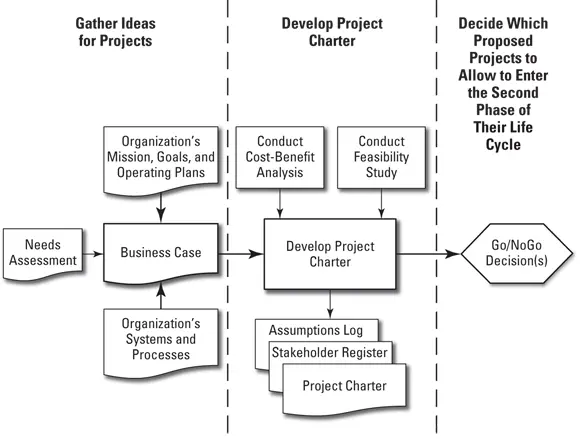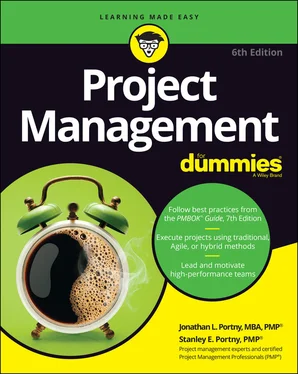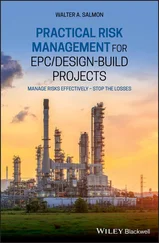Honesty is the best policy
Most people don’t enjoy delivering bad news, but all news (especially bad news) is best delivered as soon as possible, after you’ve performed your due diligence to confirm that the news is accurate and real. It’s also best delivered in a truthful, factually accurate, and direct manner. Your audience will ultimately appreciate your unemotional delivery of news, leaving as little as possible open to misinterpretation. Whether your audience is pleased with the content of your message or not, they cannot reasonably fault you for delivering the message professionally and honestly. Always remember that withholding information is akin to being dishonest!
You’ll likely find yourself at some point addressing one or more of the following example scenarios in your capacity as project manager that will require honest and frank conversations to remedy:
Underperforming project team member: This can have a negative, demotivating impact on other team members and hinder the entire team’s ability to effectively deliver the project.
Budget overrun: As soon as you are confident there exists a realistic risk of overrunning your project’s budget, loop in your organizational leadership, either for assistance in course-correcting the current path, depending on the cause of the projected overrun, or for a determination as to whether the project should continue as is or be adjusted in some manner. Perhaps it should be adjusted through a change order or similar contractual adjustment if there has been a documented deviation from the original project scope.
Schedule slippage: Your stakeholders, particularly the client, need to know as soon as possible if the project schedule starts to slip so they have sufficient time to make any necessary adjustments to accommodate the updated schedule.
Each of these situations should be addressed head-on, by presenting all the facts available, as soon as available, so your audience has what they need to make fully informed, timely decisions.
Relating This Chapter to the PMP Exam and PMBOK 7
Pay special attention to Table 2-1, which notes topics in this chapter that may be addressed on the Project Management Professional (PMP) certification exam and that are included in A Guide to the Project Management Body of Knowledge, 7th Edition (PMBOK 7).
TABLE 2-1Chapter 2 Topics in Relation to the PMP Exam and PMBOK 7
| Topic |
Location in This Chapter |
Location in PMBOK 7 |
Comments |
| The project manager’s role |
“ Knowing the Project Manager’s Role” |
2.2 Team Performance Domain |
The definition of roles in the two sources are essentially the same. |
| The code of ethics |
“ Aligning with the Four Values that Comprise the Code of Ethics” |
Section 3 – Project Management Principles |
The description of the code of ethics is essentially the same in the two sources, including each of the four values that comprise the code. |
Chapter 3
Beginning the Journey: The Genesis of a Project
IN THIS CHAPTER
 Gathering information and preparing the business case
Gathering information and preparing the business case
 Working on the project charter and generating documents
Working on the project charter and generating documents
 Choosing which proposed projects will move to the second stage of their life cycle
Choosing which proposed projects will move to the second stage of their life cycle
 Tailoring approach, governance, and processes for the environment and work at hand
Tailoring approach, governance, and processes for the environment and work at hand
 Identifying the models, methods, and artifacts for your project
Identifying the models, methods, and artifacts for your project
If you typically deal with relatively short, inexpensive, straightforward projects, you may feel that the life of a project begins the moment your manager assigns it to you. You may not think it’s necessary to spend a lot of time deciding whether to perform the project, when such analysis will probably take more time than the project will to complete. And you may feel that, even if the project isn’t successful, no more than a few dollars and a couple of days will have been spent on it, so what’s the big deal?
Organizations today use projects as a major vehicle to maintain, support, enhance, and improve all facets of their operations. To help ensure the greatest possible benefits are realized from the resources they expend to support these projects, it’s essential that organizations undertake those projects that will both produce the greatest benefits when successfully completed and have the highest likelihood of achieving that successful completion.
The steps that comprise the first phase of the project life cycle (starting the project) are depicted in Figure 3-1 (check out Chapter 1for information on the project life cycle). As the figure depicts (and this chapter explains):
1 Information about ideas for possible projects is identified and gathered.
2 Any information required to enable a thorough evaluation of a possible project that’s missing from the initial information gathered is added.
3 Projects that will proceed to the next phase of their life cycle (organizing and preparing) are chosen.

© John Wiley & Sons, Inc.
FIGURE 3-1:The steps in Stage 1 of a project’s life cycle (starting the project).
Gathering Ideas for Projects
Sometimes a terrific idea for a project just pops into your head. However, though you always want to allow for unplanned, spontaneous creativity, most successful organizations choose to pursue a more carefully thought-out process for investigating those information sources that’ll most likely highlight projects that will be of greatest value to them.
Looking at information sources for potential projects
Organizational leaders initiate projects in response to one of the following four categories of factors that influence their organization:
Regulatory, legal, or social requirements
Stakeholder requests or needs
Implementing or changing business or technological strategies
Creating, fixing, or improving products, processes, or services
Important sources of information regarding possible projects and their potential value to the organization are the annual plans and budgets of the overall organization and its individual operating units. These documents typically include
The organization’s (or unit’s) mission, goals, and strategies
Desired changes to be made in the organization’s operations
Changes occurring in the organization’s market, customers, and competition
The organization’s key performance indicators (KPIs)
Other important sources of information include descriptions of the structure, components, problems, and issues related to the organization’s major operating systems and processes.
Proposing a project in a business case
Читать дальше

 Gathering information and preparing the business case
Gathering information and preparing the business case











